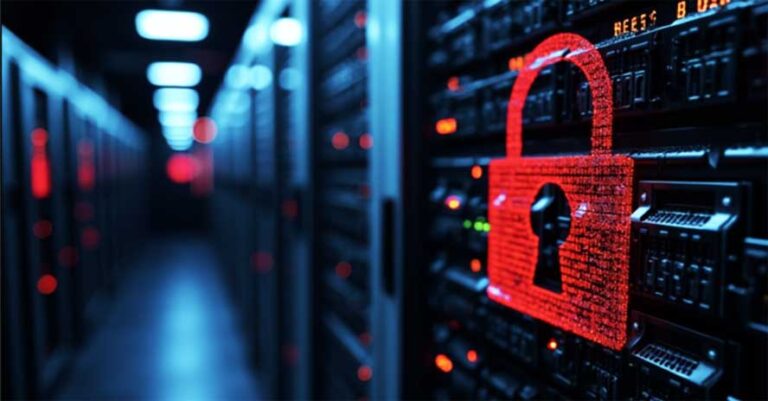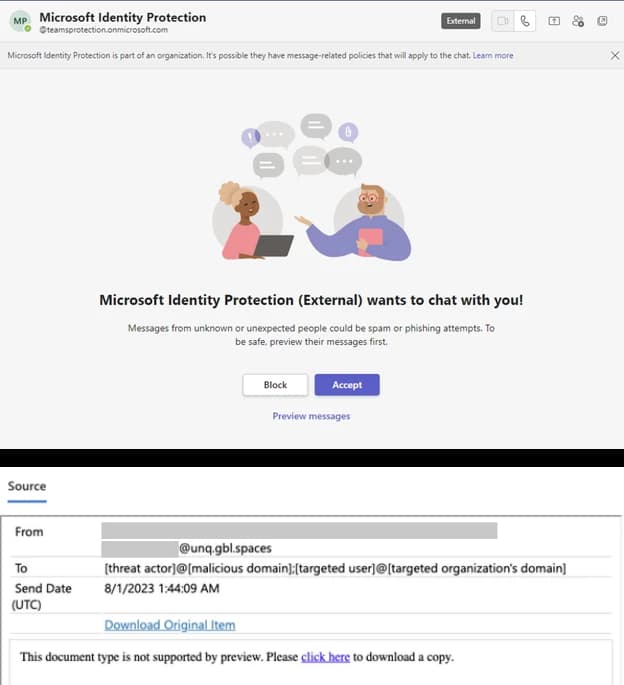Find out more about Bitdefender’s two decades of unparalleled cybersecurity excellence: https://bitdefend.me/TrustedNC
Cybersecurity in Space: Protecting the Final Frontier
Table of Contents
- 1 1. Why is Cybersecurity Important in Space?
- 2 2. Cybersecurity Challenges in Space
- 3 3. Types of Cyber Threats in Space
- 4 4. Cybersecurity Measures for Space Systems
- 5 5. The Future of Space Cybersecurity
- 6 See below resent attacks in space:
- 7 1. The Viasat KA-SAT Cyberattack (February 2022)
- 8 2. Cyber Threats to Starlink During the Russo-Ukrainian War
- 9 3. Cybersecurity Concerns in Satellite Communications
With the rapid expansion of space technology, satellites, space stations, and interplanetary missions, cybersecurity in space has become a critical concern. As space assets become increasingly connected to Earth-based networks, they are vulnerable to cyber threats, espionage, and sabotage.
This article explores the unique challenges of cybersecurity in space, the risks associated with cyberattacks on space systems, and the advanced security measures needed to safeguard space infrastructure.
1. Why is Cybersecurity Important in Space?
Space-based systems, including satellites, space stations, and deep-space missions, play a crucial role in:
✅ Global Communications – Satellites provide internet, television, and emergency communications.
✅ Navigation & GPS – Essential for military operations, aviation, and global positioning.
✅ Earth Observation & Climate Monitoring – Used for weather forecasting, disaster response, and environmental studies.
✅ Military & National Security – Satellites are critical for surveillance, intelligence gathering, and defense systems.
If cybercriminals or hostile entities gain control of space-based assets, they can disrupt critical infrastructure, interfere with military operations, or even weaponize satellites.
2. Cybersecurity Challenges in Space
Cybersecurity in space presents unique challenges compared to traditional cybersecurity:
A. No Physical Access for Recovery
- If a satellite or space station is hacked, direct physical intervention is impossible.
- Recovery relies on remote software updates or reboots, which may not always work.
B. Vulnerabilities in Communication Links
- Space assets rely on radio frequency (RF) communications that can be jammed, intercepted, or spoofed.
- Hackers can use signal interference or fake commands to disrupt operations.
C. Supply Chain Risks
- Satellites and spacecraft are built using components from multiple manufacturers worldwide.
- A single compromised component could introduce malware or backdoors into the system.
D. Longevity of Space Systems
- Many satellites operate for decades without frequent software updates.
- Outdated security protocols make them easy targets for cyberattacks.
E. Increasing Commercial & Private Sector Involvement
- Companies like SpaceX, Blue Origin, and Amazon’s Project Kuiper are launching thousands of commercial satellites.
- The rapid expansion increases the risk of cyber vulnerabilities due to lack of standardised security regulations.
3. Types of Cyber Threats in Space
Space assets face several cyber risks, including:
1. Satellite Hijacking 🚀🛰️
- Hackers take control of a satellite to disable, move, or repurpose it.
- Example: Attackers could shut down GPS systems, affecting global navigation.
2. Signal Jamming & Spoofing 📡
- Jamming blocks satellite signals, causing communication failures.
- Spoofing sends fake data, leading to incorrect positioning (e.g., misleading GPS users).
3. Data Interception & Espionage 🕵️♂️
- Attackers can intercept satellite communication to steal sensitive military or corporate data.
4. Ransomware Attacks 💰
- Hackers could encrypt critical satellite data and demand ransom for recovery.
5. Space Debris & Collision Manipulation 🛰️💥
- A cyberattack could force a satellite into an incorrect orbit, causing collisions with other space objects.
4. Cybersecurity Measures for Space Systems
To defend against cyber threats in space, organisations and governments use advanced security strategies:
A. Secure Communication Protocols
- Quantum encryption and end-to-end encryption protect space-based communications from eavesdropping.
B. AI & Machine Learning for Threat Detection
- AI-powered systems monitor anomalies in satellite behavior and detect cyber intrusions.
C. Intrusion Detection & Firewalls in Space Systems
- Space-based firewalls and IDS (Intrusion Detection Systems) prevent unauthorised access.
D. Redundant Backup & Recovery Systems
- Secure backup satellites can take over in case of an attack on a primary system.
E. Cybersecurity Standards for Space Agencies
- Agencies like NASA, ESA (European Space Agency), and the US Space Force are developing cybersecurity regulations for satellites and spacecraft.
5. The Future of Space Cybersecurity
With commercial space travel, Mars missions, and space-based internet networks (Starlink, OneWeb, Amazon Kuiper) on the rise, cybersecurity in space will become even more critical. Future developments may include:
✅ AI-driven cybersecurity for autonomous spacecraft
✅ Blockchain technology for secure space transactions
✅ Self-healing satellites that repair software vulnerabilities automatically
✅ International space cybersecurity treaties
Cybersecurity in space is no longer science fiction—it is a real and urgent challenge. As space technology advances, the risks of cyberattacks grow exponentially, making strong cybersecurity protocols essential for protecting satellites, communication networks, and future space missions.
In recent years, cyberattacks targeting space systems have highlighted the critical importance of cybersecurity in the space domain. Below are notable instances that underscore the vulnerabilities and the evolving nature of threats to space infrastructure:
See below resent attacks in space:
1. The Viasat KA-SAT Cyberattack (February 2022)
Overview: On February 24, 2022, coinciding with the onset of Russia’s invasion of Ukraine, a significant cyberattack disrupted Viasat Inc.’s KA-SAT satellite network. This network provides broadband internet services across Europe and Ukraine.
Impact:
- Service Disruption: Tens of thousands of users experienced internet outages, particularly in Ukraine and other European countries.
- Infrastructure Affected: The attack disabled modems that communicate with the KA-SAT satellite, leading to widespread connectivity issues.
Technical Details: Researchers identified a new strain of wiper malware, dubbed “AcidRain,” as the culprit. This malware was designed to remotely erase vulnerable modems and routers, rendering them inoperable.
Broader Implications: Beyond individual users, the attack had cascading effects, including the malfunction of approximately 5,800 wind turbines in Germany, which relied on the compromised network for remote monitoring and control.
2. Cyber Threats to Starlink During the Russo-Ukrainian War
Overview: SpaceX’s Starlink satellite internet service has been pivotal in maintaining communications in Ukraine amidst the conflict. However, its involvement has made it a target for cyber and electronic warfare operations.
Russian Countermeasures:
- Jamming and Spoofing Attempts: Russian forces have attempted to jam and spoof Starlink signals to disrupt Ukrainian communications.
- Cyberattacks: There have been efforts to breach the security of Starlink terminals, aiming to gain control or render them inoperative.
Resilience and Response: Despite these threats, Starlink has demonstrated resilience. Rapid software updates and adaptive cybersecurity measures have mitigated many of the attempted disruptions, ensuring continued service availability.
3. Cybersecurity Concerns in Satellite Communications
Overview: The increasing reliance on satellite communications for critical infrastructure has raised concerns about potential cyber vulnerabilities.
Potential Threats:
- Malware Infiltration: Hackers can upload malware to satellite terminals, potentially gaining control, shutting them down, or severing communication links.
- Physical Damage: Advanced cyberattacks could manipulate satellite systems to the extent of causing physical damage, such as forcing a satellite to overheat, leading to catastrophic failures.
Expert Insights: Col. Jennifer Krolikowski, former Chief Information Officer for the U.S. Space Force’s Space Systems Command, highlighted these dangers, emphasizing the need for robust cybersecurity measures to protect space assets.
These incidents underscore the evolving cyber threat landscape in space operations. They highlight the necessity for continuous advancements in cybersecurity protocols to protect space-based infrastructure from sophisticated cyber threats.
- How to build a website with WordPress and what are the best plugins to use: WordPress Web Design Tutorials: How to build a website with WordPress and what are the best plugins to use. Building a website with WordPress is an excellent choice due to its versatility, ease of use, and a vast array of plugins that enhance functionality. Here’s a comprehensive guide to building a WordPress website, along with recommendations for the best plugins.
- The Most Important Stages and Plugins for WordPress Website Development: Developing a WordPress website requires careful planning, execution, and optimisation to ensure it is functional, user-friendly, and effective. The process can be broken into key stages, and each stage benefits from specific plugins to enhance functionality and performance. Here’s a detailed guide to the most important stages of WordPress website development and the essential plugins for each stage.
- What are the most powerful Tools for SEO in WordPress?: Powerful SEO Tools for WordPress: Search Engine Optimisation (SEO) is essential for improving your WordPress website’s visibility in search engines. Here are the most powerful tools to optimise your site effectively:
- How to add shipping modules in CubeCart: Step 1: Log in to Your CubeCart Admin Panel: Open your web browser and navigate to your CubeCart admin login page. Enter your username and password to log in.
Step 2: Navigate to the Extensions Section: Once logged in, go to the left-hand menu and click on Manage Extensions. From the dropdown, select Extensions.
Step 3: Find Shipping Modules: In the Extensions section, locate the Shipping tab to view available shipping modules. You can browse through the list or use the search function to find a specific module. - Gathering domain and IP information with Whois and Dig: In the digital age, understanding the intricacies of domain and IP information is essential for anyone navigating the online landscape. This article explores two powerful tools—WHOIS and DIG—that help gather valuable insights about websites and their underlying infrastructure. Whether you’re a cybersecurity professional, a web developer, or simply curious about online resources, you will learn how to effectively utilize these tools, interpret their outputs, and apply this knowledge to real-world scenarios.
- What are the best WordPress Security plugins and how to set them up the best way: Read a comprehensive guide on the best WordPress security plugins and how to set them up to ensure optimal protection for your WordPress site.
- Will a headland provide enough shelter?
- Learn How To Purchase Your Own Domain Name with Fastdot.com: Open your web browser and go to Fastdot.com. Navigate to the Domains section, either from the homepage or from the main navigation bar.
Step 2: Search for Your Desired Domain Name: In the domain search bar, type the domain name you want to purchase. Fastdot supports a wide range of domain extensions (TLDs), such as .com, .net, .org, .com.au, and many others. Click the Search Domain button. The system will check the availability of your desired domain name.





